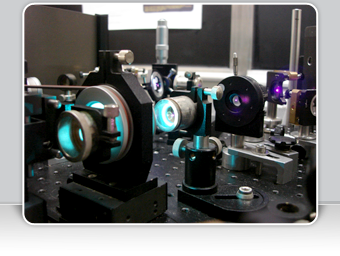« Back to all publications
Download this list in a RIS file or a BIB file or a PDF file
|
||||||||
A study of the energetics of electron transfer (e.t.) quenching of 9-cyanoanthracene fluorescence by aromatic (π) and aliphatic (n) donors in n-hexane using picosecond transient thermal phase grating spectroscopy is reported. The results show that the enthalpy of exciplex formation is well correlated with the redox potentials of the partners and independent of the nature of the donor, as long as exciton interaction is small. The main difference between exciplexes with donors of the two classes is the larger ground-state repulsion energy with n-donors. However, if the adiabatic ionization potentials are considered, the enthalpy of exciplex formation with n-donors is larger than expected by about 0.4 eV. These two contradictory results reflect an inconsistency between the values for adiabatic ionization potentials and oxidation potentials of n-donors. The occurrence of two distinct Rehm−Weller plots for e.t. quenching with π- and n-donors shifted by about 0.8 eV on the horizontal axis seems to originate to some extent from the use of adiabatic ionization potentials. | ||||||||
|
||||||||
The rate constants of quenching of the triplet state T1 of four aromatic ketones by triethylamine in acetonitrile show no correlation with the Gibbs energy of the reaction, but depend on the nature of T1, i.e. n–π*, π–π* or charge transfer (CT) type. For example, the ratio of rate constants between two systems of n–π* and CT type, with the same driving force, is over 108. It is concluded that these reactions are kinetically controlled, the decisive factor for the activation energy being the electrostatic charge distribution of the carbonyl group in the triplet state. | ||||||||
|
||||||||
The effect of excess excitation energy on the rotational dynamics of rhodamine 6G in the ground and the first singlet excited state has been investigated in series of n-alcohols and alkanenitriles using the picosecond polarization grating technique. In nitriles, the reorientation times are the same for excitation at the S1 ← S0 and S2 ← S0 transitions, and no state dependence could be detected. In alcohols, the rotational dynamics of rhodamine 6G in the excited state is about 25% faster when formed with 1.15 eV excess excitation energy. This effect is ascribed to a decrease of the hydrodynamic volume due to dissociation of solute/solvent hydrogen bond following intramolecular vibrational redistribution. An accompanying perturbation of the solvent shell structure caused by the fast local temperature jump is not excluded. | ||||||||
|
||||||||
A ps transient grating setup using white light continuum for probing is presented. Measurements on an aromatic molecule in solution have been carried out with this system. The diffracted spectrum is analyzed using Kogelnik’s coupled wave theory. At short time delay after excitation, the diffracted spectrum is strongly dominated by absorption and in this case transient grating spectroscopy is equivalent but more sensitive to transient absorption spectroscopy. If some of the excitation energy is dissipated as heat, the diffracted spectrum is essentially the same as the dispersion spectrum of the transient species at time delays approaching half the acoustic period. The performances of this technique and of transient absorption spectroscopy are compared. | ||||||||
Download this list in a RIS file or a BIB file or a PDF file
Contact:
Eric Vauthey
Physical Chemistry Department - Sciences II - University of Geneva
30, Quai Ernest Ansermet - CH-1211 Geneva 4 (Switzerland)
© All rights reserved by Eric Vauthey and the University of Geneva
Design and code by Guillaume Duvanel




